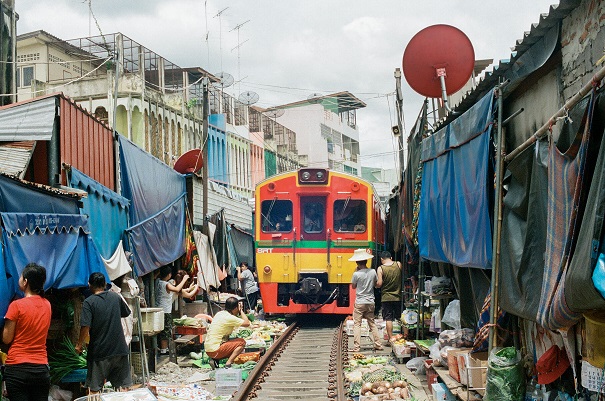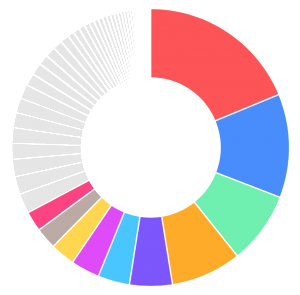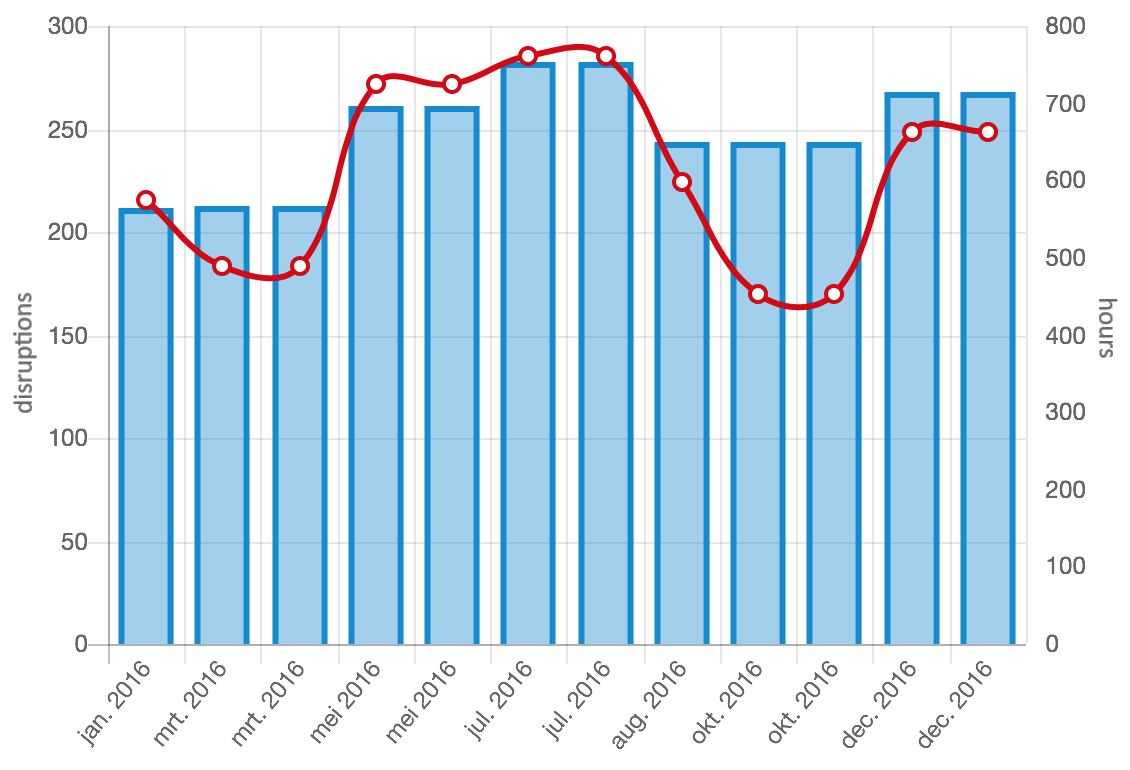4.2.1 to 4.2.6
Course subject(s)
4. Complexity of Disruptions
Causes
4.2.1 Operational Factors
In the previous week, we looked at how railway operations becomes much more challenging when things occur which you cannot anticipate. We mainly looked at how to deal with a situation in which the regular timetable has to be adjusted and that predefined solutions, based on prior experience can be guideline in this. Below you will find the main causes that relate to railway operations affecting the schedule.
The planning itself can cause disturbances because of the presence of shortages. These shortages can be the lack of an appropriate strategy to act upon disturbances, insufficient available resources in the planning of staff, vehicles, material or equipment, and shortages in the time scheduling of the vehicles to adapt to passenger’s needs.
Failure in the execution means the execution does not occur according to what was planned. Failures in the execution of operations have greatly been reduced because of the presence of automation. Nonetheless, human action is still required in some cases and thus error in the execution can still occur. Failure in the execution of maintenance can lead to failures in the system in the form of technical problems.
When there are no good strategies developed to handle disturbances, or when the staff isn’t competent enough, there is a risk of failure to provide correct monitoring and decision-making in the presence of other disturbances in the system.
4.2.2 Technical Problems
Below, we will take a look at some different areas where specific technical difficulties can cause disturbances in the rail network.
Central control and visualization equipment
This involves the operation and visualization in the central control unit. The equipment refers to the Human-Machine Interface (HMI) used for the automatic routing of the vehicles. Its correct operation guarantees that changes can be made to the routes and schedules in case of disturbances. Because of its high importance, these systems usually operate with extra components that can take over in case of failure of the main components.
Central management
It is where the actual automatic routing and scheduling is performed. A failure in one of its components would affect the train route monitoring and control, and affect the reporting, monitoring and diagnosis functions in case of disturbances. Furthermore, a failure could cause a full operational stop.
Decentralized management
Includes the equipment involved in interlocking, power supply and decentralized computer systems, with functions such as the automatic operation and protection of trains, and the local energy supply. Furthermore, these include equipment which routes the acquired data from the railway equipment to the central control center. Failure in this equipment could cause a local operational stop.
Railway and surrounding components
The railway track consists of the track itself and the structures above it including the overhead contact lines. Damages to or defects of these structures could cause critical and non-critical operational disturbances (depending on the severity).
The surrounding components of the railway track include antennas, free-wheeling components, lightning, and monitoring devices, among others. Usually operation can continue after failure of one of these components, although disturbances such as delays might occur. Failure in these components will not often cause an operational stop.
Station, civil engineering work and station equipment
The station refers to the building itself, the platforms, the reception halls, etc. Other civil engineering works refers to bridges, tunnels and similar structures. Failure or damage on these structures will cause disturbances of different levels depending on the severity of the damage.
Moreover additional equipment in the stations could cause non-critical disturbances if they fail. This equipment is linked to the visualization, communication and service to the passengers. Facilities like ticket machines, security cameras, sounds and visualization equipment among others.
Vehicle
Failure of the vehicle can originate from several sources within itself. The range of components that can fail within the train can include failure in the lightning, the ventilation system, failure of one of the doors and even failure in the braking system.
Communication equipment
This section refers to the communication equipment used to connect all other sections. It connects the vehicles, the track monitoring equipment and the station components with the central control unit and other information devices. There are different channels of communication with different levels of importance. For example, the communication of commands to the vehicles is of high importance and can cause operational stops after failure, while the communication to some visualization equipment will cause lesser disturbances.
4.2.3 Seasonal Challenges
Weather always is a unexpected element which can lead to extreme effects. The mini-lecture below will give you an overview of some of the main weather circumstances through the season that affect the railway network.
Weather conditions
Sorry but there don't seem to be any downloads..
Subtitles (captions) in other languages than provided can be viewed at YouTube. Select your language in the CC-button of YouTube.
4.2.4 Weather around the World
Weather conditions can disturb the system on different levels, affecting the mechanical properties of the components of both vehicles and the railway track.
Below, you can find some well visualised examples borrowed from YouTube of heavy snowfall, a sudden landslide, dense fog and other extreme weather conditions that have affected rail roads around the world. If you have videos related to weather circumstances you would like to share, please do so in the discussion forum.
4.2.5 Other External Factors
Vandalism
Vandalism refers to damage done to the equipment within the vehicles, the stations, the track and other installations of the railway system, but also to the vehicles and buildings themselves. The damage could cause either critical or noncritical disturbances depending of the importance of the component for the operation of the system.
As an example, here is an article about train vandalism in South Africa:
“On-board vandalism has soared, with 60 to 70 carriages per month ending up back in workshops, having been stripped of copper wiring“.
Passengers
Passengers can also cause disruptions in the operation of the trains. These are due to for example: passengers blocking access to other passengers, activation of emergency brake switches, accidents or criminal activity. The severity of the consequences is linked with the severity of the disruption. After misusing an emergency brake, the train might be running again in 15 minutes, but after an accident it might be blocking the track for an entire afternoon.
One Netherlands example of this was the evacuation of Rotterdam station, when a ticketless passenger locked himself in a bathroom in 2015.
“Meanwhile on Rotterdam Central Station, the police have not been able to make contact with the suspicious passenger. He jumped onto the Thalys train just before departure and locked himself in the bathroom. The man is not responding to the police’s attempts to make contact with him. All the platforms and shops in the station have been evacuated to give the emergency services all the space they need“.
A famous example of people causing disturbances for trains, but in this case not the passengers, is at the Maeklong Railway Market in Bangkok. The market is located around the train tracks, which means that the shop owners have to close and reopen 8 times a day to allow the train to pass by.

The Maeklong Railway Market (photo by 威翰 陳)
Personel
People working in rail can also be a factor. Consider strikes on both infrastructure and rolling stock. But a more mundane course can also be a train driver, who doesn’t arrive on time. This can be through sudden illness, oversleeping or even a traffic accident on the way to work, but in all cases, the train won’t arrive because the driver is missing.
Power supply
Railways rely on power. Not only the catenary, but also signals, computer systems, crossings, everything runs on electricity. In many countries, the railway infrastructure manager is by far the largest consumer of electricity, which makes it reliable on a continuous supply. Where it is unlikely that a whole system fails, one failing signal can be enough to create a large disruption.
4.2.6 Yearly Overview 2016

The railway infrastructure manager has to deal daily with a large variety of disruptions. Some events happen more often than others and to target the most critical parts of the network, they are classified in different groups. If all disturbances are labelled this way over a full year, it gives a better understanding what happens on the track. An interesting fact from the Netherlands is that the 10 lines with most disruptions all are either connected to Schiphol International Airport or Utrecht Central Station (the most centrally located station within the country).
The graphic below shows the main causes in the Netherlands over the year 2016 in which a total of 3031 disruptions were called in.
The 10 most common disruptions form 67,2% (2038) of the yearly incidents. In total there are many more specific causes as seen in the diagram. Below the diagram with the 10 main disruption types coloured and listed (with between brackets the average time period of interruption).

- 569 broken train (49 minutes)
- 366 signal failure (148 minutes)
- 255 switch failure (140 minutes)
- 249 collision with people involved (145 minutes)
- 151 earlier disruption (116 minutes)
- 112 energy deployment (57 minutes)
- 102 crossing failure (96 minutes)
- 87 unexpected maintenance (313 minutes)
- 76 track repair (486 minutes)
- 71 stranded train (56 minutes)
Some disruption take a long time to solve with an average time period of 2 hours and 35 minutes. The the following graphic you can see the total of incidents per month (blue – left axis) and the total time (in hours) of these disruptions (red – right axis) for the full year o 2017 and in more detail of the month December 2017.

In the overview, it becomes clear that summer and winter holidays are the busiest months and that the hours and number of disruptions are quite well spread. Higher values in summer often indicate more planned maintenance, which can lead to follow-up disturbances and the start of winter in December (discussed earlier this week) brings many challenges as well. Looking at the month of December, the values are much more capricious. This shows that different disruptions can have very different solution times as well.
If we then look at a weekly overview measured over the year, all working days almost are equally busy, while weekends are more quite, since less people travel by train.


Source of the graphics: Rijdendetreinen

Railway Engineering: An Integral Approach by TU Delft OpenCourseWare is licensed under a Creative Commons Attribution-NonCommercial-ShareAlike 4.0 International License.
Based on a work at https://ocw.tudelft.nl/courses/railway-engineering-integral-approach/.




